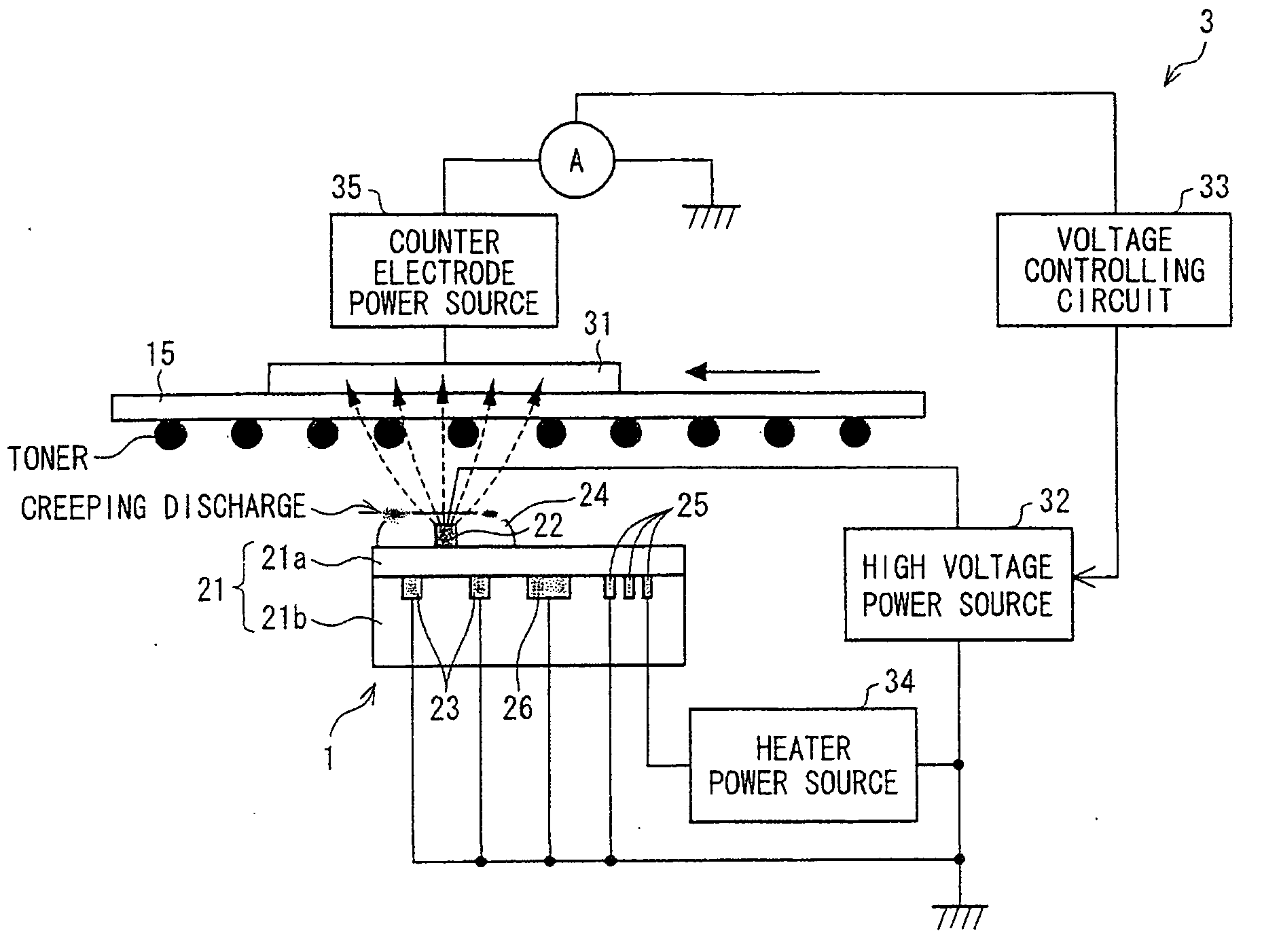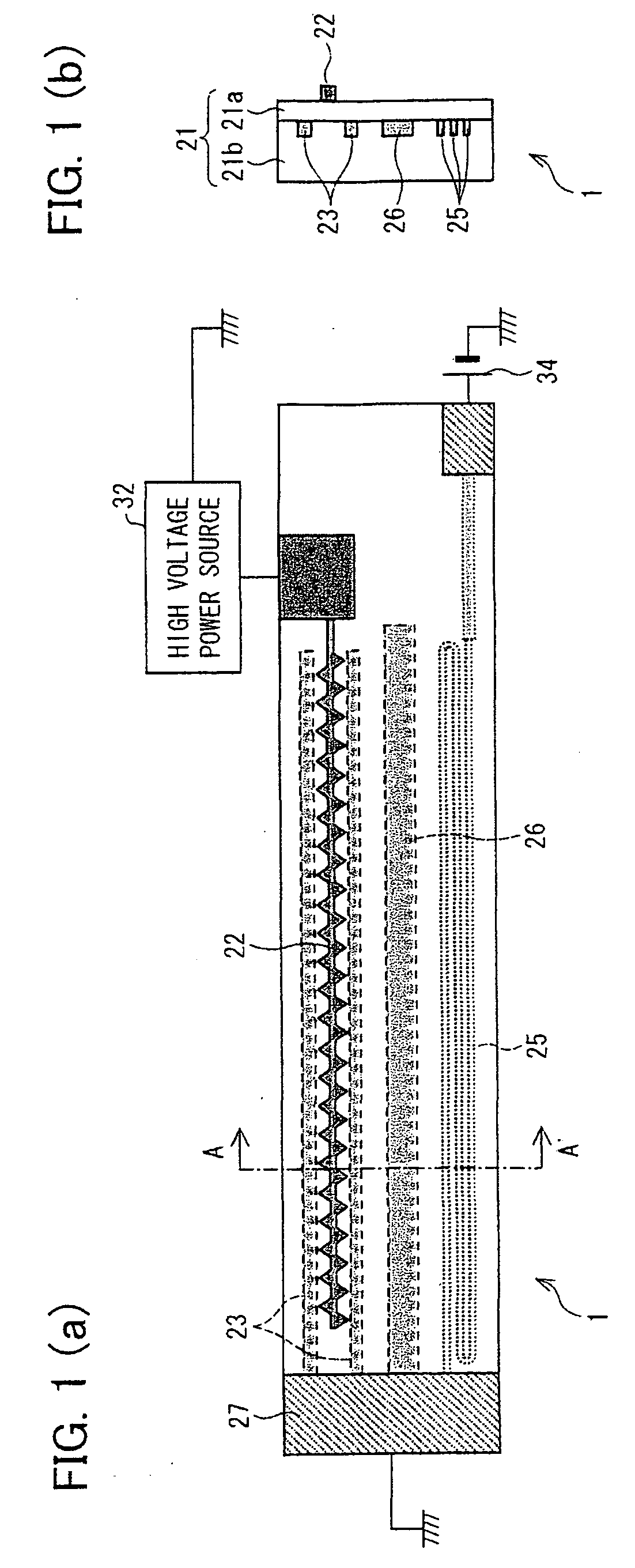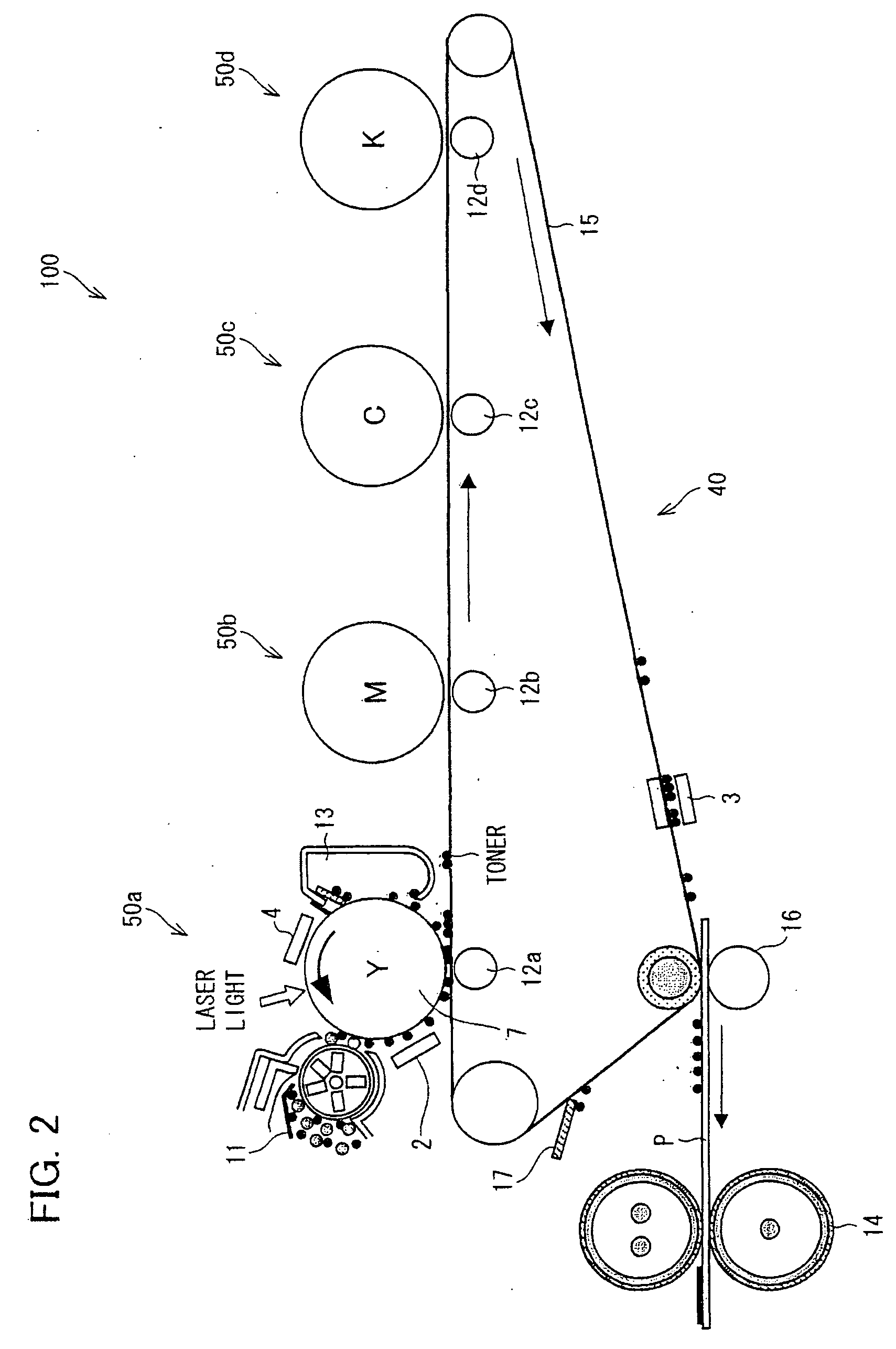Ion generating element, charging device and image forming apparatus
a charging device and generating element technology, applied in the direction of electrographic process apparatus, instruments, corona discharge, etc., can solve the problems of high voltage line leakage, machine breakdown, damage to heater power source, etc., to prevent the leakage of heater electrodes, simple arrangement, easy arrangement
- Summary
- Abstract
- Description
- Claims
- Application Information
AI Technical Summary
Benefits of technology
Problems solved by technology
Method used
Image
Examples
embodiment
[0052]The following specifically explains one embodiment of an ion generating element according to the present invention, a charging device according to the present invention including such an ion generating element, and an image forming apparatus including the charging device with reference to FIGS. 1 through 6. Note that the following embodiment is an example that specifically explains the present invention, and does not limit the technical scope of the present invention.
[0053]First, the following explains a whole arrangement of the image forming apparatus of the present embodiment. FIG. 2 is a cross sectional view schematically illustrating an arrangement of an image forming apparatus 100 including a pre-transfer charging device of the present embodiment. This image forming apparatus 100 is a tandem type printer employing an intermediate transfer system, and can form a full color image.
[0054]As illustrated in FIG. 2, the image forming apparatus 100 includes visible image forming ...
example 1
[0109]The following description explains an Example which uses an ion generating element of the present invention. Here, ion generating elements of Examples and Comparative Examples are explained with reference to FIGS. 1, 4, and 7.
[0110]FIGS. 7(a) and 7(b) illustrate an ion generating element of a comparative example. In the ion generating element of Comparative Example 1 illustrated in FIG. 7(a), the inductive electrode 23 was line-shaped, and was bent in a U-shape so as to surround the discharge electrode 22. A bias voltage was applied to both ends of the inductive electrode 23 so that the inductive electrode 23 functioned as a heater. Namely, in Comparative Example 1, the inductive electrode 23 doubled as a heater electrode. In this Comparative Example 1, a width of the inductive electrode 23 was approximately 0.2 mm, a length thereof was approximately 600 (300×2) mm, and a resistance value thereof was approximately 30 Ω.
[0111]An ion generating element in Comparative Example 2 a...
example 2
[0121]The following description explains another Example of an ion generating element according to the present invention. As illustrated in Fig. D, an ion generating element 1′ of the present Example (Example 2) included, in addition to the arrangement of the ion generating element 1, a shield electrode 26 in which both ends of the shield electrode 26 in a longitudinal direction each have a connection of ground. Each connection of ground was arranged to be connected with a ground potential. When the ion generating element 1 breaks, although an end section provided with the connection of ground of the shield electrode 26 (side with which the ground potential is connected) maintains a ground potential, an end section of the other side becomes in a floating state. In this case, the part that becomes in the floating state serves simply as a bridge electrode to a heater line. This gives a concern that the shield electrode 26 cannot function to shield the leak current. However, adoption o...
PUM
 Login to View More
Login to View More Abstract
Description
Claims
Application Information
 Login to View More
Login to View More - R&D
- Intellectual Property
- Life Sciences
- Materials
- Tech Scout
- Unparalleled Data Quality
- Higher Quality Content
- 60% Fewer Hallucinations
Browse by: Latest US Patents, China's latest patents, Technical Efficacy Thesaurus, Application Domain, Technology Topic, Popular Technical Reports.
© 2025 PatSnap. All rights reserved.Legal|Privacy policy|Modern Slavery Act Transparency Statement|Sitemap|About US| Contact US: help@patsnap.com



